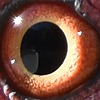HOME | DD
 TheBootesArtVoid — The Seagulls Glare
TheBootesArtVoid — The Seagulls Glare

#animal #animalphotography #animals #australia #australian #australiananimals #australianwildlife #bird #birds #natural #nature #naturephotography #photo #photograph #photography #photographyanimals #photographynature #seagull #seagulls #wildlife #wildlifenature #wildlifephotography #australianbirds #birdphotography #wildlifeanimals #wildlifereferencephoto #thebootesartvoid
Published: 2022-07-18 20:56:14 +0000 UTC; Views: 2078; Favourites: 98; Downloads: 0
Redirect to original
Description
Species Name: Silver GullSpecies Latin Name: Chroicocephalus novaehollandiae
Native To: Australia
Conservation Status: Least Concern
Photo Taken At: N/A
Size (length): 38 – 45cm (15.0 – 17.7 inches)
Weight: 260 – 350g (9.2- 12.3 grams)
Top Speed: 29 – 35.4kmh (18 - 22mph)
Lifespan: 30 years
Population Trend: Increasing
Diet: Piscivores, scavenger, carnivores, omnivore
Lifestyle: Terrestrial, congregatory, oviparous, precocial, soaring birds, seabird
Baby Name: Chick
Mating Behaviour: Monogamous
Reproductive Season: August to December
Eggs per Clutch: 1 - 3
Sub Species:
Chroicocephalus novaehollandiae Forsteri (Located in north and northeast Australia, New Caledonia, and Loyalty Islands)
Chroicocephalus novaehollandiae Novaehollandiae (Located across southern Australian and Tasmania)
Chroicocephalus novaehollandiae Scopulinus(Located in New Zealand)
Description:
Silver gulls are the most common breed of seagull in Australia, they are a native species of Seagull to Australia and have a wide spread distribution across the country as well as in New Zealand. They are identified by their white heads, tails, and underparts. They have light grey feathers along their back and black tipped wings. In adult Silver Gulls their bill, legs, and eye-ring are bright orange-red.
They are not to be confused with the European Herring Gull (Larus argentatus) which looks relatively similar to the Silver Gull with exception to lighter colour beaks and their much larger size compared to the Silver Gulls. Furthermore the European Herring Gull as the name implies is located across Europe with no overlap in habitats between this species and the Silver Gulls.
Diet:
These birds are primarily carnivores that will mostly feed on various sealife and other creatures including worms, fish, insects, and crustaceans. Since the 1950's the Silver Gull has adapted quite well to modern civilization and will readily scavenge food discarded by humans. They can grow bold enough to actually pester humans for scraps, as they tend to feed from scraps it seems that their diet has expanded from a carnivorous diet to a more omnivorous diet.
Behaviour:
The most common call heard from these birds are described as either a rough or harsh "keww-aarr" or "kwarwh" call according to most sources.
Breeding will generally occur between the months of August to December and will typically occur in large colonies located in offshore islands. Their nests will be located on the ground consisting of seaweed, roots, and plant stems. The nests themselves may be found in low shrubs, rocks, and jetties. The male and female pairs will form lifelong bonds with one another and two broods of eggs can be produced in a given year. Typically a clutch of 1 – 3 eggs will be laid per brood and the male and female will take turns incubating, feeding and securing the cheeks as they grow. Although the peak breeding season is during the months of August to December, it is stated in some sources that breeding can occur at any time during the year.
Threats:
With how successful these birds have adapted to modern urban areas their numbers have exploded any place where there is human activity. As a result these animals numbers continue to increase with the only potential threat to their numbers in the future being habitat loss.
It is indicated that the numbers of these birds in itself have become a concern as despite these birds being native to Australia their increase in numbers have in some cases out competed other native birds for nesting locations. As these birds are capable of scavenging from places such as the average city street corner to the a garbage dump it seems unlikely that their numbers will drop any time soon.
Further Reading (general information):
Wikipedia: Silver gull - Wikipedia
Birdlife: Silver Gull | BirdLife Australia
Kidadl: Silver Gull: 21 Facts You Won't Believe! (kidadl.com)
Animalia: Silver gull - Facts, Diet, Habitat & Pictures on Animalia.bio
Australian Museum: Silver Gull - The Australian Museum
Related content
Comments: 14

👍: 1 ⏩: 1

👍: 0 ⏩: 0

👍: 1 ⏩: 1

👍: 0 ⏩: 0

👍: 1 ⏩: 1

👍: 0 ⏩: 0

👍: 1 ⏩: 1

👍: 1 ⏩: 0

👍: 1 ⏩: 1

👍: 2 ⏩: 1

👍: 1 ⏩: 0

👍: 1 ⏩: 1

👍: 0 ⏩: 1

👍: 1 ⏩: 0

























